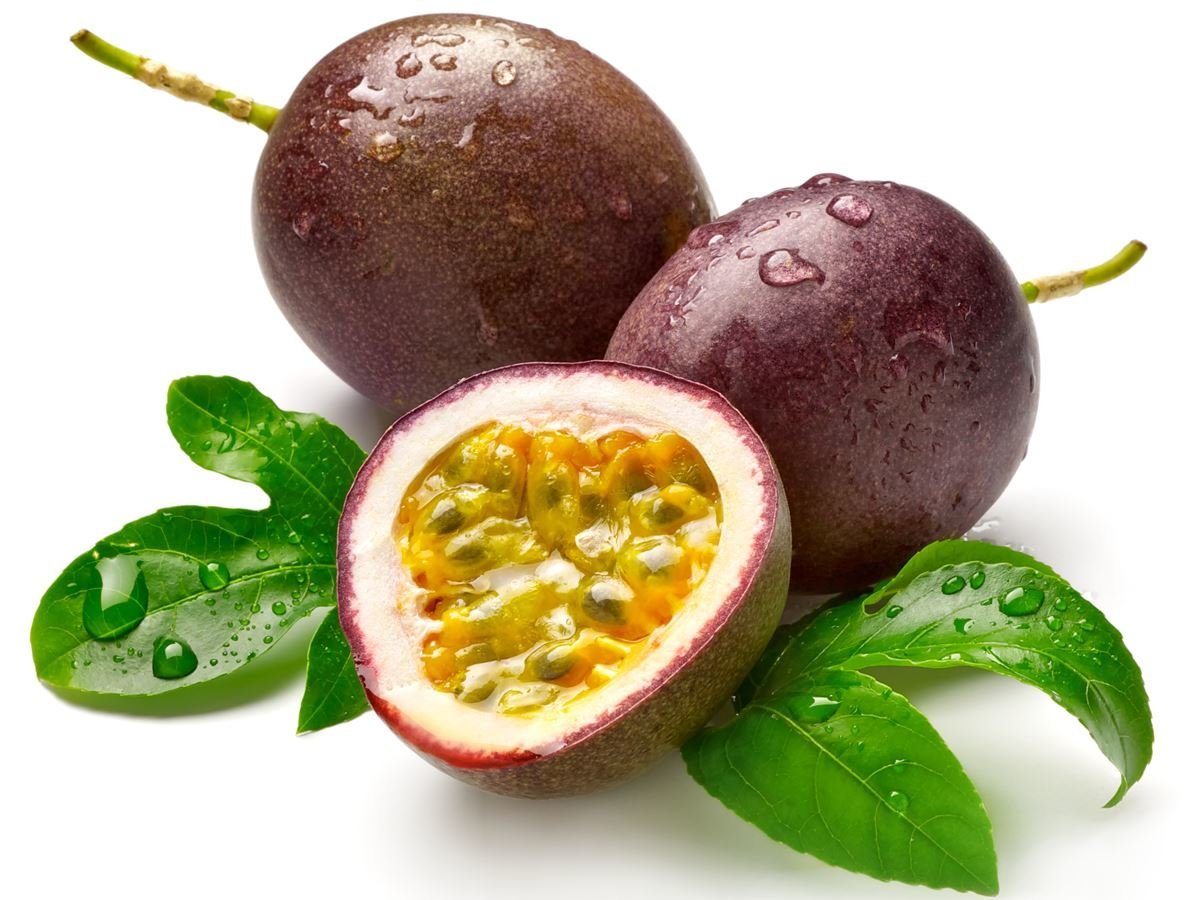

Passiflora edulis is a vine species of passion flower that is native to southern Brazil through Paraguay and northern Argentina. It is cultivated commercially in tropical and subtropical areas for its sweet, seedy fruit, commonly called passion fruit. The fruit is a pepo, a type of berry, round to oval, either yellow or dark purple at maturity, with a soft to firm, juicy interior filled with numerous seeds. The fruit is both eaten or juiced, the juice often added to other fruit juices to enhance aroma.
Passion fruit is widely grown in tropical and semitropical regions of the world. Within the United States, it is grown in Florida and California. They generally have to be protected from frost, although certain cultivars have survived light frosts after heavy pruning of affected areas.
P. edulis is a perennial vine; tendrils are borne in leaf axils, and have a red or purple hue when young. There are two main varieties: a purple-fruited type, P. edulis f. edulis, and the yellow-fruited P. edulis f. flavicarpa.
Usually the vine produces a single flower 5–7.5 cm wide at each node. The flower has 5 oblong, green sepals and 5 white petals. The sepals and petals are 4-6mm in length and form a fringe. The base of the flower is a rich purple with 5 stamens, an ovary, and a branched style. The styles bend backward and the anthers, which are located on top of the styles, have a very distinct head.
The fruit produced is entirely fleshy (making it botanically a berry), and is spherical to ovoid. The outside color of the berry ranges from dark-purple with fine white specks to light yellow. The fruit is 4—7.5 cm in diameter; purple fruits are smaller, weighing around 35 grams, while yellow fruits are closer to 80 grams. The smooth, leathery rind is 9–13 mm thick, including a thick layer of pith. Within the berry, there are typically 250 black seeds, each 2.4 mm in length. Each seed is surrounded by a membranous sac filled with pulpy juice. The flavor of the juice is slightly acidic and musky. The passion fruit's flavor can be compared to that of the guava fruit.
Several distinct varieties of passion fruit with clearly differing exterior appearances exist. The bright yellow flavicarpa variety, also known as yellow or golden passionfruit, can grow up to the size of a grapefruit, has a smooth, glossy, light and airy rind, and has been used as a rootstock for purple passionfruit in Australia. The dark purple edulis variety is smaller than a lemon, though it is less acidic than yellow passionfruit, and has a richer aroma and flavour.